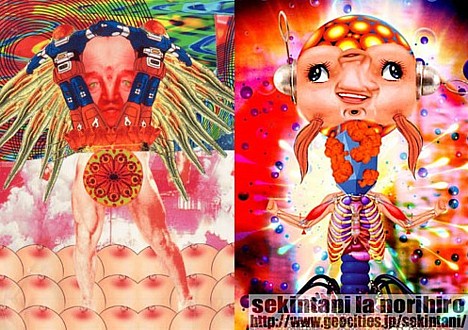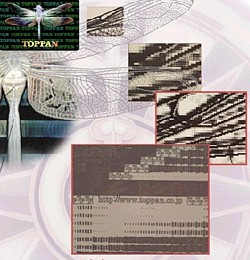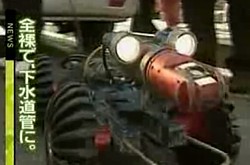
Medical book meets manga meets porn in Norihiro Sekitani's insane collages. (Not exactly safe for work.)
[Link: la sekintani dot oni]

Medical book meets manga meets porn in Norihiro Sekitani's insane collages. (Not exactly safe for work.)
[Link: la sekintani dot oni]
 On February 6, Nippon Oil (ENEOS), Toyota Motors, Hino Motors and the Tokyo Metropolitan Government announced the launch of a joint project aimed at putting bio hydrofined diesel (also known as BHD, or second-generation biodiesel) into practical use. In 2007, the city will begin trial operation of city buses that run on a 10% BHD-diesel blend.
On February 6, Nippon Oil (ENEOS), Toyota Motors, Hino Motors and the Tokyo Metropolitan Government announced the launch of a joint project aimed at putting bio hydrofined diesel (also known as BHD, or second-generation biodiesel) into practical use. In 2007, the city will begin trial operation of city buses that run on a 10% BHD-diesel blend.
Produced through a process of hydrogenating vegetable oil and animal fats, BHD is more resistant to oxidation than conventional biodiesel known as fatty acid methyl ester (also known as FAME, or first-generation biodiesel), allowing for higher concentrations in diesel blends. While FAME concentrations in diesel blends are limited to 5%, BHD concentrations can reach 10%. The new fuel complies with Tokyo's latest emission control regulations.
Furthermore, the BHD production process allows for the raw materials -- vegetable oil, animal fat and used cooking oil -- to be processed together. In FAME production, each type of raw material must be processed separately.
Before deciding whether or not to put BHD into practical use, the group will study the overall effectiveness of the fuel as a means of fighting global warming, as well as the feasibility of establishing a fuel production and supply system. The proposed move toward BHD is the first stage in the Tokyo Metropolitan Government's project to cut carbon emissions to 25% of 2000 levels by 2020.
 On February 1, Toppan Printing unveiled new nanotext printing technology for inserting microscopic text into holographic images. The company says they plan to use nanotext to provide an extra layer of security to their "Crystagram" holographic anti-counterfeit technology. Test production is set to begin later this month.
On February 1, Toppan Printing unveiled new nanotext printing technology for inserting microscopic text into holographic images. The company says they plan to use nanotext to provide an extra layer of security to their "Crystagram" holographic anti-counterfeit technology. Test production is set to begin later this month.
Toppan's holographic nanotext printing uses electron beams (EB) to print characters 30 times smaller than possible with existing "microtext" technology. With a resolution of about 100 nanometers, it is now possible to print more than 20 holographic characters in a space the width of a human hair (about 80 microns).
Holograms have long been used as an effective method for preventing the counterfeit of items ranging from gift certificates to credit cards to luxury brand products, but organizations find themselves locked into a race with counterfeiters that are quick to adopt new technologies. Nanotext, Toppan argues, provides the next hurdle for counterfeiters to overcome.
Toppan is now working on the technology necessary for mass production, and full market release is scheduled for autumn 2007. The company is aiming for first-year sales of 300 million yen ($2.5 million).
[Source: Toppan press release]
 This story is not from Japan, but I couldn't resist...
This story is not from Japan, but I couldn't resist...
On Tuesday, police in Seoul, Korea enlisted the help of a small robot to track down a fugitive purse-snatcher hiding out in the city's sewage system. The 57-year-old suspect was on the run after snatching a woman's purse at a hospital. Witnesses to the crime tried to detain the man, but he wriggled out of his clothes -- all of them -- and managed to escape into the city's sewage system through a 1-meter (3.3 feet) diameter pipe.
Police located the man four hours later with the help of a 6-wheeled, camera-equipped sewage pipe inspection robot able to broadcast images for up to 150 meters (nearly 500 feet). Once they apprehended the man, who appeared to have lost his way in the darkness of the cramped pipes, the police returned him to the hospital, where he received treatment for hypothermia. The temperature in Seoul on Tuesday was 1 degree Celsius (34 degrees Fahrenheit).
At the end of this video news clip, the police ask the man why he stripped off his clothes, to which he replies, "Leave me alone. I'm not feeling well."
[Sources: Chosun Ilbo, TUF]